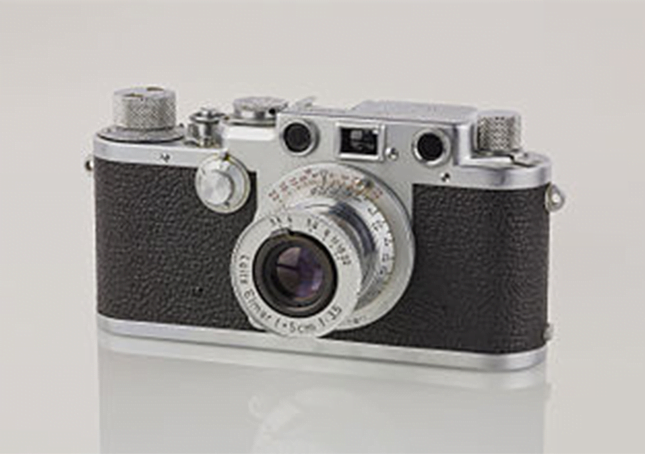Camera

A camera is an optical instrument used to capture an image. At their most basic, cameras are sealed boxes (the camera body) with a small hole (the aperture) that allows light in to capture an image on a light-sensitive surface (usually photographic film or a digital sensor).
Cameras have various mechanisms to control how the light falls onto the light-sensitive surface. Lenses focus the light entering the camera, the size of the aperture can be widened or narrowed to let more or less light into the camera, and a shutter mechanism determines the amount of time the photo-sensitive surface is exposed to the light.
The still image camera is the main instrument in the art of photography and captured images may be reproduced later as a part of the process of photography, digital imaging, photographic printing. The similar artistic fields in the moving image camera domain are film, videography, and cinematography.
The word camera comes from camera obscura, which means “dark chamber” and is the Latin name of the original device for projecting an image of external reality onto a flat surface. The modern photographic camera evolved from the camera obscura. The functioning of the camera is very similar to the functioning of the human eye. The first permanent photograph was made in 1825 by Joseph Nicéphore Niépce.
A camera captures light photons, usually from the visible spectrum for human viewing, but in general could also be from other portions of the electromagnetic spectrum.
All cameras use the same basic design: light enters an enclosed box through a converging or convex lens and an image is recorded on a light-sensitive medium (mainly a transition metal-halide). A shutter mechanism controls the length of time that light can enter the camera.
Most cameras also have a viewfinder, which shows the scene to be recorded, and the ability to control focus and exposure so that it is not too bright or too dim.
